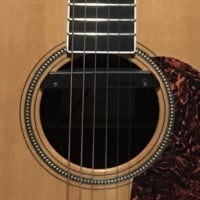Welcome! Here are the website rules, as well as some tips for using this forum.
Need to contact us? Visit https://heatinghelp.com/contact-us/.
Click here to Find a Contractor in your area.
If our community has helped you, please consider making a contribution to support this website. Thanks!
Water in Chimney Sage Chapter 2
Options

D107
Member Posts: 1,944
there was wall consensus that the bit of water and muck oozing out of the old bottom chimney cleanout was water from the curing of the thermix insulating the 20ft high, 5" wide new 316L stainless steel liner.
A small crack in the crown, nor the possibility of water penetration around the base of the chimney were considered as well.
Comes time for the annual liner inspection last week, and a 2nd company comes to check bottom cleanout and we find globs of what looks like wet cement with an old loose brick in the back. Seems like no way the thermix could still be curing though I do wonder how cement that had cured could get wet and soft again. There does seem to be some correlation between heavy rain and this phenomenon.
It seems possible to me that the 50 year old chimney base needs to be dug out, tarred, refilled and then have dirt piled high on a slope around it to maybe 18" out. I'll leave it to others if they think a thin crack at the crown could leak this much. The cap has a top plate and I can't see water getting through that way or directly through the lining in that much quantity. (see photos)
I'd not only to stop the leak but also figure out how to push back up any thermix that has come down--I'd think that missing thermix on the bottom would weaken the thermix above it. When the company returns to do the cleaning they will remove all the much and brick etc and get a mirror up there and see what's what. My guess is that since the original company never cleanout out the old terra cotta flue completely before installing liner--despite contract's specs--some of this is old debris. We know the old lining was damaged.
Company has said that for upper chimney pointing, since the condition wasn't serious, they would use silicone caulk to seal a few joints and also for the crown crack.
Any thoughts?
PS I should make clear that this liner was installed with a T at the bottom with the 90EL going to the breeching and the straight part going down to bottom cleanout. I know others on the wall recommend taking the liner in one piece, bending it into the breeching like a hockey stick. Some have said they don't like this since it may allow debris from top to go directly into boiler....
Thanks,
David
A small crack in the crown, nor the possibility of water penetration around the base of the chimney were considered as well.
Comes time for the annual liner inspection last week, and a 2nd company comes to check bottom cleanout and we find globs of what looks like wet cement with an old loose brick in the back. Seems like no way the thermix could still be curing though I do wonder how cement that had cured could get wet and soft again. There does seem to be some correlation between heavy rain and this phenomenon.
It seems possible to me that the 50 year old chimney base needs to be dug out, tarred, refilled and then have dirt piled high on a slope around it to maybe 18" out. I'll leave it to others if they think a thin crack at the crown could leak this much. The cap has a top plate and I can't see water getting through that way or directly through the lining in that much quantity. (see photos)
I'd not only to stop the leak but also figure out how to push back up any thermix that has come down--I'd think that missing thermix on the bottom would weaken the thermix above it. When the company returns to do the cleaning they will remove all the much and brick etc and get a mirror up there and see what's what. My guess is that since the original company never cleanout out the old terra cotta flue completely before installing liner--despite contract's specs--some of this is old debris. We know the old lining was damaged.
Company has said that for upper chimney pointing, since the condition wasn't serious, they would use silicone caulk to seal a few joints and also for the crown crack.
Any thoughts?
PS I should make clear that this liner was installed with a T at the bottom with the 90EL going to the breeching and the straight part going down to bottom cleanout. I know others on the wall recommend taking the liner in one piece, bending it into the breeching like a hockey stick. Some have said they don't like this since it may allow debris from top to go directly into boiler....
Thanks,
David
0
This discussion has been closed.
Categories
- All Categories
- 87.3K THE MAIN WALL
- 3.2K A-C, Heat Pumps & Refrigeration
- 62 Biomass
- 429 Carbon Monoxide Awareness
- 120 Chimneys & Flues
- 2.1K Domestic Hot Water
- 5.8K Gas Heating
- 115 Geothermal
- 166 Indoor-Air Quality
- 3.7K Oil Heating
- 77 Pipe Deterioration
- 1K Plumbing
- 6.5K Radiant Heating
- 395 Solar
- 15.7K Strictly Steam
- 3.4K Thermostats and Controls
- 56 Water Quality
- 51 Industry Classes
- 50 Job Opportunities
- 18 Recall Announcements